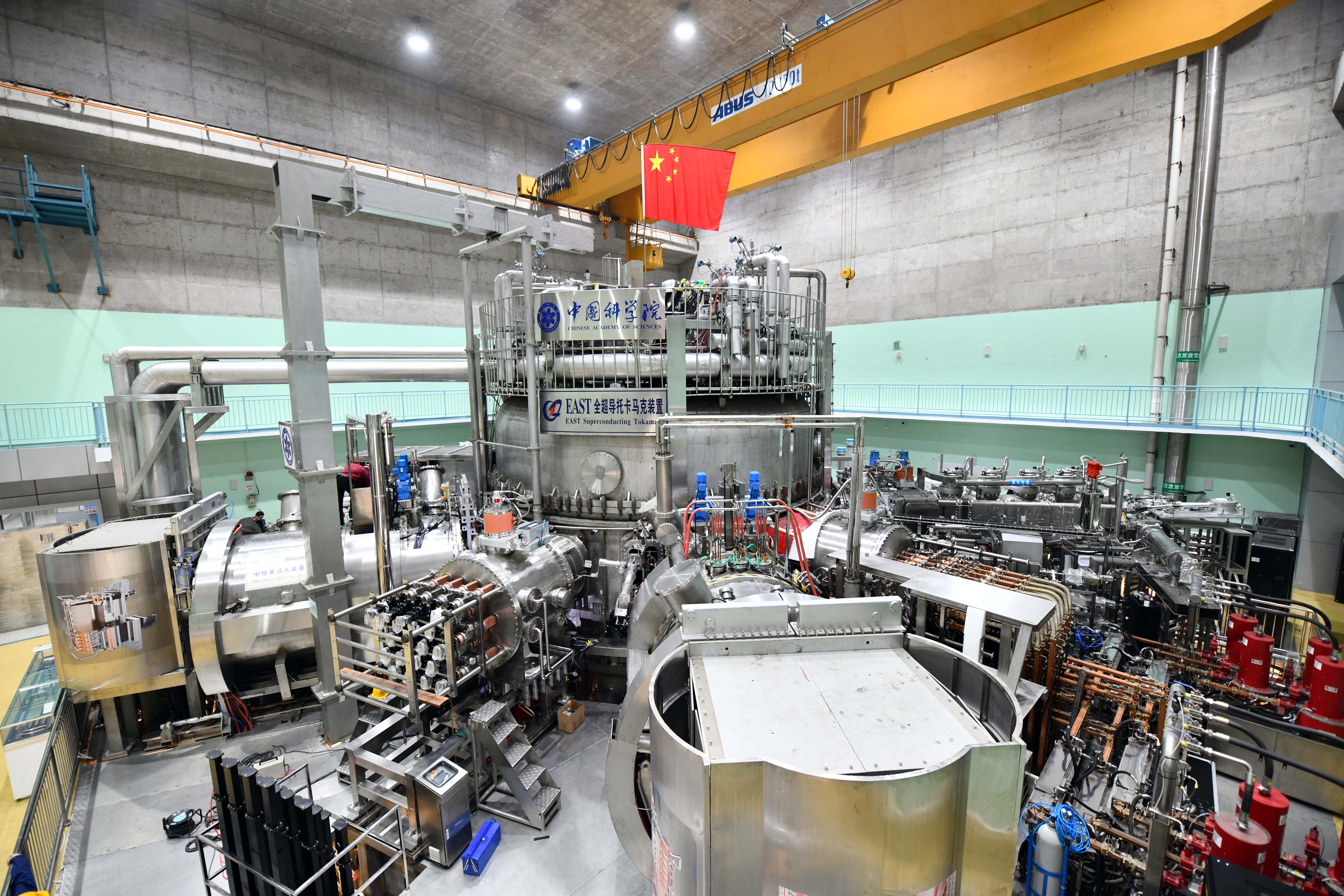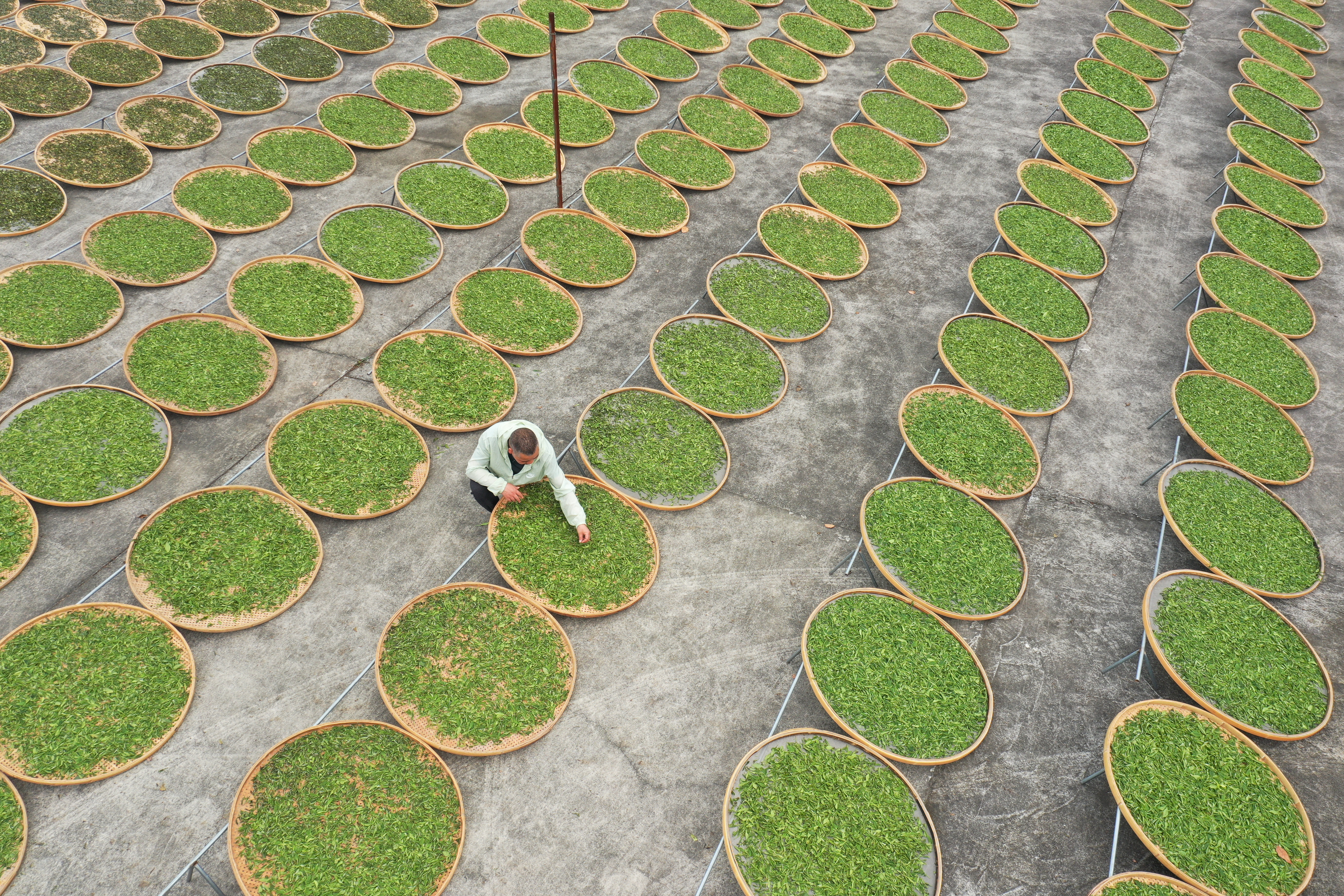EAST: Potent Future Energy Source
The photo shows the Experimental Advanced Superconducting Tokamak (EAST), China's "artificial sun," in Hefei, east China's Anhui province. (PHOTO: XINHUA)
By LU Zijian
In April, the Experimental Advanced Superconducting Tokamak (EAST), China's "artificial sun," realized a 403 -second steady -state long -pulse high confinement mode plasma operation, a world record and a concrete step forward towards the exploration of clean energy generated by nuclear fusion.
What is EAST
EAST is a nuclear fusion experiment device independently designed and built by China, and has made several world records in plasma operation. It is also the world's first fully superconducting tokamak device.
The device got its artificial sun nickname, because it generates energy through nuclear fusion in the same way as the sun.
EAST includes over 200 key technologies, more than 2,000 patents and millions of parts. Conditions like ultra-high temperature, ultra -low temperature, ultra-high vacuum, ultra-strong magnetic field and ultra-large current can all be realized by EAST, according to Song Yuntao, director-general of Institute of Plasma Physics, Chinese Academy of Sciences (ASIPP).
Wang Teng, associate research fellow at ASIPP, said that EAST adopted four kinds of high-power heating systems, to achieve ultra-high temperatures, which equals tens of thousands of microwaves heating at the same time. A magnet field nest was also built to contain plasma whose temperature is as high as hundreds of millions of degrees Celsius.
Road to an artificial sun
The breakthroughs of EAST are accumulated by efforts made over decades.
As mentioned above, the sun produces energy by nuclear fusion. Earth is abundant with raw materials to create nuclear fusion. If an artificial sun is built, the energy shortage will no longer be a problem.
The research on nuclear fusion energy has been going on for over 70 years, but still no artificial sun has been created. It's just too difficult, said Li Jiangang, academician at the Chinese Academy of Engineering.
As early as the 1950s, China began research on controllable nuclear fusion, and developed its first superconducting tokamak HT-7 in 1994.
The EAST project was initiated in 1998 and began construction in 2000. At that time, there was no superconducting magnet or large low-temperature system developed in China, but scientists did manage to develop many key parts and equipment of EAST in shabby laboratories. In 2007, the first EAST successfully went into operation.
Wang, who was a member of the team in achieving the breakthrough in April, began his journey with EAST in 2014. He found the road to an artificial sun was far more circuitous than expected.
After countless failures, he finally established a dynamic feedback compensation to ensure the safe and stable operation of EAST.
Future perspective
The international community has also been looking into research of nuclear fusion energy. The International Thermonuclear Experimental Reactor (ITER) was proposed in 1985 to deal with the energy and environment issues encountered by the world's population.
ITER is jointly constructed by China, EU, India, Japan, South Korea, Russia and the U.S., and one of the largest and most profound international R&D cooperation projects by far.
China undertakes approximately nine percent of the entire task, and ASIPP plays an important role in this process. The institute is in charge of the procurement package of conductors, power supply and final assembly.
In November 2022, China produced the first section of the enhanced heat flux first wall for ITER and the key indicators were well above the design requirements.
Luo Delong, head of the China International Nuclear Fusion Energy Program Execution Center, said the production of this section offered ITER important Chinese experience and Chinese solutions.
Song said the institute has cooperated with over 1,200 institutes and organizations from 45 countries, and the number of visits made by foreign scholars is around 500 per year. There is no single country that can do all the EAST research alone, Song said, adding that, "We open the door to the entire world."
Iter means route in Latin and to build a route of light, cooperation is essential.



